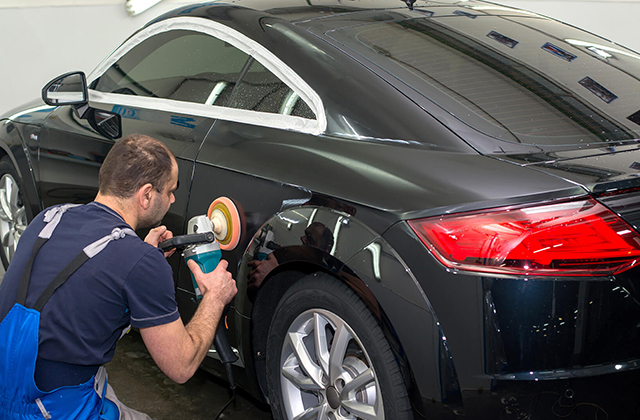
Each coating of vehicle paint protection Adelaide products are different and offers their own unique properties. Painting the car is something we’ve all considered at some point before banishing the thought to that area of our brain where all of our unrealized DIY-dreams exist. It’s not as hard as you’d think, however, and you probably already own half the tools you need in order to complete this task.
I’m here to take you through every step of the process, with insider tips and product suggestions along the way.
Painting your car is not as tricky as many would have you believe, but it’s important to have a plan in place before you get started.
This includes finding the right place to work, the best tools to work with and a method that suits you.
This article will cover everything you need to know, as well as offering advice on how to stay safe and get professional-looking results. I know – you’re welcome…
Before You Begin
Really think about where’s best to carry out this project – the key things to consider here are space, ventilation, lighting and time.
Whilst the process itself can be done in a couple of days, remember that you’ll want to leave the car for at least 24 hours after painting in order for it to be touch-dry, and another week or so before it’s fully cured! It’s important to be patient with this, trust me.
You’re going to be moving around a lot so you’ll need plenty of room for yourself as well as all your equipment. Tidy up any trailing cables or stray tools that are lying around before you start – it sounds self-explanatory, but most adults have experienced the agony of standing on a Lego piece in the dark, so you can see where I’m going with this!
Get all your equipment out early – this means you’re ready to go, but also avoids you accidentally getting dust everywhere while you’re digging around in a cupboard for your sandpaper halfway through.
I’d suggest covering the garage or workspace in tarp or protective sheets – it can get pretty messy when there’s a paint-sprayer involved.
This is also a good way to prevent dust-fall, which is essential during the final stages of painting your car.
Once the car is painted, you’ll need to leave it for around a week or so before the paint is fully cured, and any dust will compromise the hard work you’ve done throughout, so a dust-free zone is ideal! I’ve also mentioned using a dust collector below – set that up now if you have one.
You’ll also be using lots of chemicals, in the form of paint, cleaning products, etc, so make sure your DIY den is well-ventilated. The cleaner; the better – of course, you’ll be wearing a respirator mask (safety first!), but dust can affect more than just your lungs and poses the risk of compromising your paint job if it gets in the way.
Good lighting is also essential – you want to see everything you’re doing while painting your pride and joy! There’s nothing worse than missing a strip because you couldn’t quite see what you were doing, so take the time to find a well-lit area, or install some extra lights for this job.
Tool Kit
Of course, a DIY-er is nothing without their tools. Ever started cooking and had to send the kids out for eggs halfway through?
It pays to have everything ready, no matter how spontaneously your motivation strikes you!
You’ll need all your safety gear on from the very beginning, so make sure it’s all clean and functioning before you do anything else.
I’m talking the full works:
• Nitrile Gloves
You’ll want something that sits tight on the wrist to prevent any debris or dust creeping up your arms, and I’d always recommend something with textured fingertips, just to make gripping easier for you while you’re working.
• Coveralls
Either fully waterproof or at least splash-proof, your coveralls should fit well and come with a hood for full protection. Elasticated cuffs are best!
• Respirator Mask
It’s up to you whether you go for a half or full mask, but make sure it fits well.
Elasticated, adjustable straps and a lightweight frame will keep you comfortable while you work.
If you choose to go for disposable filters, make sure you use a new one for this project and change at any point you feel necessary.
You’ll also need to have all your painting gear ready to go:
• Pressure Washer
The first step of this process involves cleaning your car thoroughly and getting rid of any rusty bits or debris. Using a pressure washer isn’t essential, and you can do this by hand, but it’ll save you plenty of time and effort.
If choose to do this outside, do it in space with plenty of empty sky above – doing it under a tree is just asking for leaves, twigs or bird droppings to land on it!
• Dust Collector
Yep, you really should be this concerned about dust! If dust falls onto the newly-painted car before it has finished curing, you could end up with an uneven surface. This can be rectified in the final stages of sanding/ buffing, but I’d suggest using a dust collector where possible. It essentially filters the dust out of the air and collects it for you, and keeps the area clean and tidy.
• Painters Tape
You don’t need to spend a lot of money to get good quality painters’ tape. Look for something adhesive that doesn’t leave a lot of sticky residue and you’ll be fine!
• Thinner
This will be used with both the primer and the paint itself, most likely, so double check with the store assistant that the product you’re buying will be compatible with both.
• Primer
For a small car, I’d suggest buying a gallon of primer; for larger cars, around a gallon and a half. This will be used in the early stages of preparing your car for its new paint job and can be thinned if needed according to its instructions.
• Sandpaper
I’d go for wet-and-dry sandpaper, around 1200-2000 grit, which you’ll be using to sand away any excess primer.
• Automotive Paint
Automotive paint is easy to find in most hardware stores. Speak to an assistant for more specific help, but you’ll want to buy enough to cover the whole car, so take note of the measurements.
I’ve listed below before you take a trip to the store. If you want to repaint your car in the same color, it’s easy to find out the color code from the car manufacturer.
Work on the basis of three gallons for small cars and four gallons for larger cars.
• Spray Paint Gun
You’ll probably be using an air compressor with this.
I’d recommend an oil-free compressor, which eliminates any risk of oil contaminating the paint and ruining your hard work.
Look for something that can run for a long time, you’ll need it! You can view our reviews on Airless Paint Sprayers here.
• Buffer
You’ll be using this in the final stages, so opt for something high-quality to help add a final shine to your paintwork.
• Clear Coat Varnish – Lacquer
This will be used in the final stages to add a high shine to your paintwork.
Make sure it’s compatible with the automotive paint you’ve opted for!
Small cars will use around two gallons; large will use between three and four.
